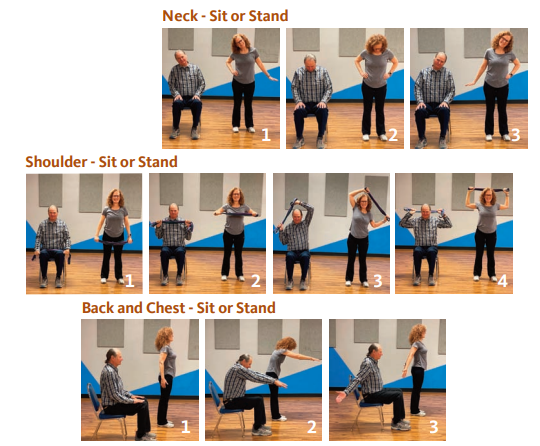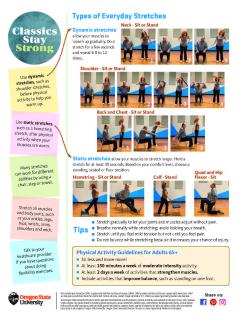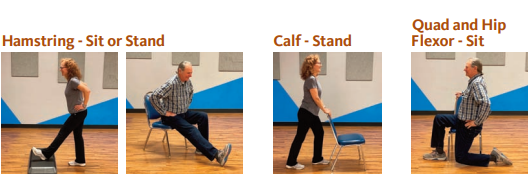Focus on Flexibility
Flexibility allows your joints to move through their full range of motion without discomfort. Stretching exercises can increase flexibility. Examples include:
- Daily Activity
- Being Physically Active
- Yoga or Tai Chi
- Stretches Before and After Exercise
Benefits of Flexibility
- Improves blood flow to your organs and body parts.
- Helps with your posture, balance and muscle strength.
- Helps you move with ease for daily tasks and reduces chronic joint and muscle pain.
- Helps reduce your risk of strains and injuries from falls.
Add flexibility to your meals
Enjoy being flexible with your food choices and how you prepare them. Go to FoodHero.org for easy, tasty recipes such as My Personal Pizza.
More about Flexibility
- Loss of flexibility is a normal part of aging, but it can be improved with regular stretching.
- Stretching exercises can be done almost anywhere and anytime.
- Be flexible with fresh, frozen and canned fruits and vegetables. All can be healthy!
- Try making meals ahead and freezing them in single-serving sizes to save time and energy.
- Herbs and spices add flavor and color to food without adding extra salt, sugar and fat.
Types of Everyday Stretches
Dynamic stretches allow your muscles to loosen up gradually. Do a stretch for a few seconds and repeat it 8 to 12 times.

Static Stretches allow your muscles to stretch longer. Hold a stretch for at least 30 seconds. Based on your comfort level, choose a standing, seated or floor position.
Tips
- Stretch gradually to let your joints and muscles adjust without pain.
- Breathe normally while stretching; avoid holding your breath.
- Stretch until you feel mild tension but not until you feel pain.
- Do not bounce while stretching because it increases your chance of injury.
Classics Stay Strong
- Use dynamic stretches, such as shoulder stretches, before physical activity to help you warm up.
- Use static stretches, such as a hamstring stretch, after physical activity when your muscles are warm.
- Many stretches can work for different abilities by using a chair, step or towel.
- Stretch all muscles and body parts, such as your ankles, legs, hips, wrists, arms, shoulders and neck.
- Talk to your healthcare provider if you have questions about doing flexibility exercises.
Physical Activity Guidelines for Adults 65+
- Sit less and move more!
- At least 150 minutes a week of moderate intensity activity.
- At least 2 days a week of activities that strengthen muscles.
- Include activities that improve balance, such as standing on one foot.





